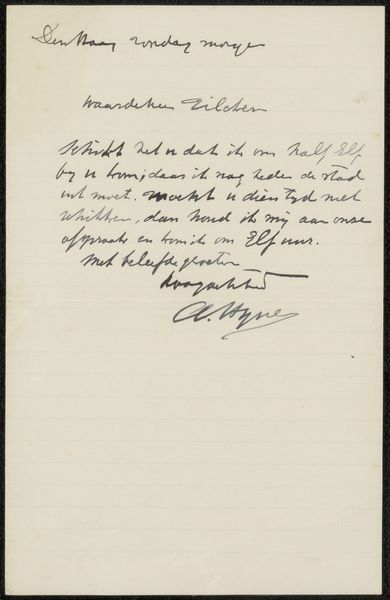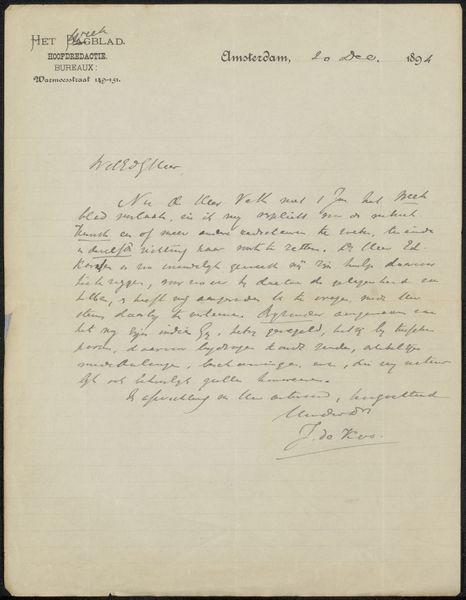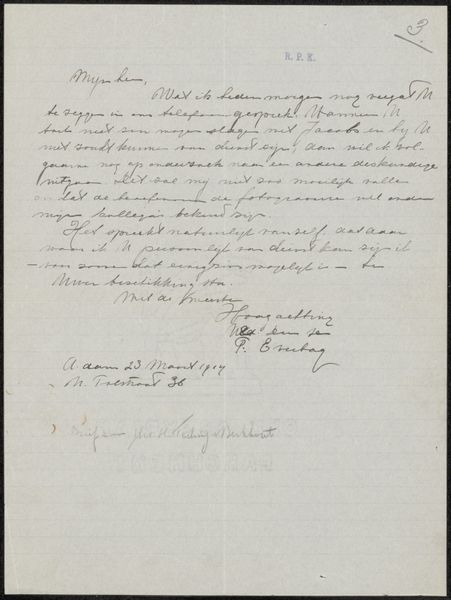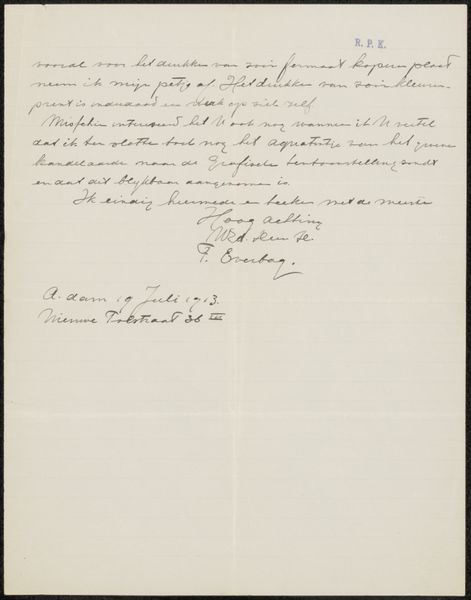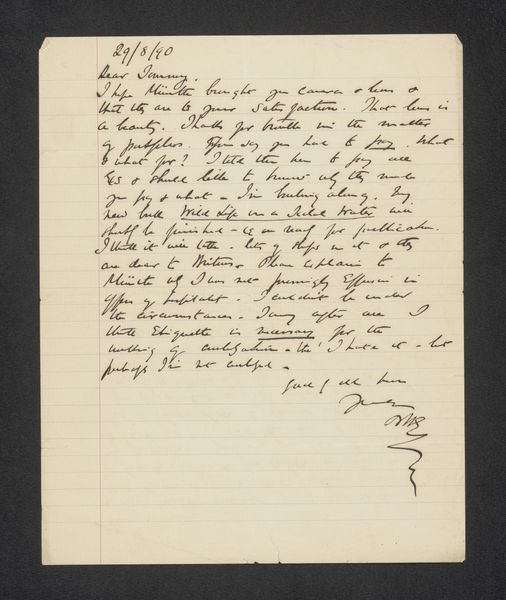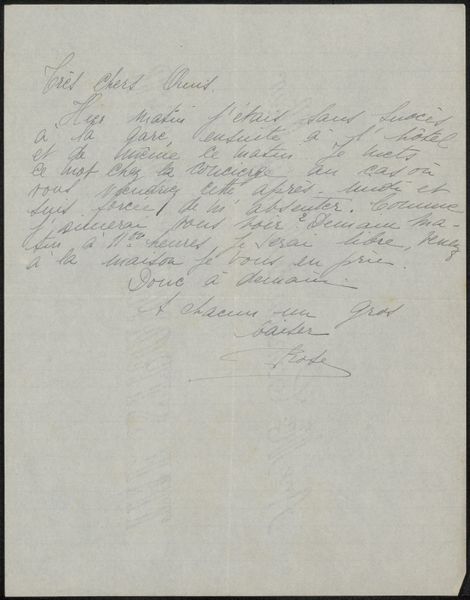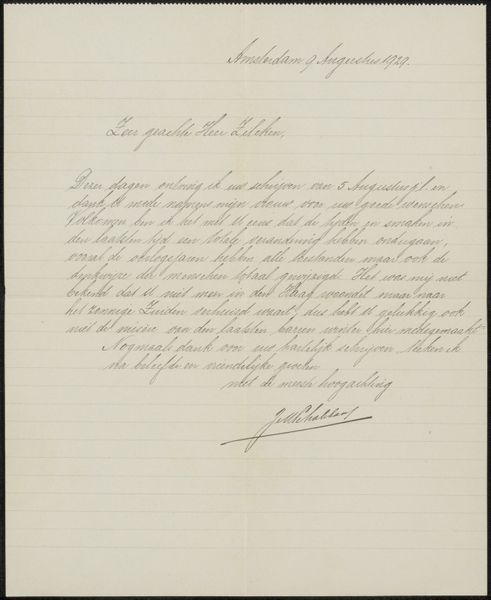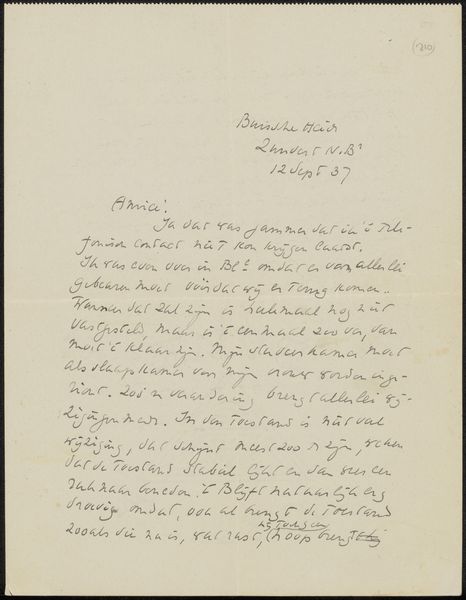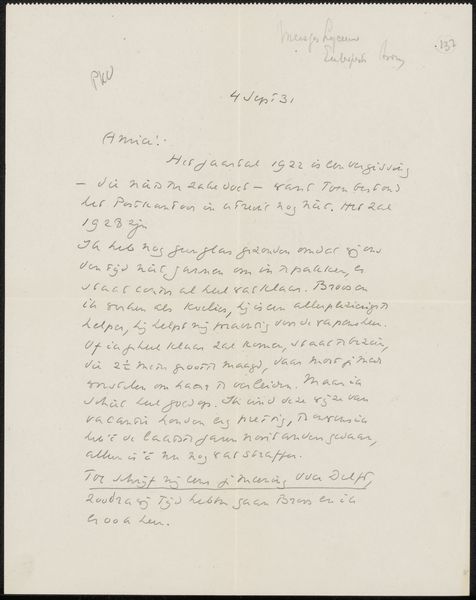
drawing, paper, ink, pen
#
portrait
#
drawing
#
comic strip sketch
#
pen sketch
#
hand drawn type
#
paper
#
personal sketchbook
#
ink
#
ink drawing experimentation
#
pen-ink sketch
#
ink colored
#
pen work
#
sketchbook drawing
#
pen
#
sketchbook art
Copyright: Rijks Museum: Open Domain
Editor: Here we have "Brief aan Johan Christiaan Kerkmeijer" by Dick Ket, likely from 1937. It’s an ink drawing on paper, resembling a handwritten letter. I’m struck by the intimacy of it; like stumbling upon someone’s private correspondence. How do you interpret this work as more than just a personal note? Curator: I see this less as a simple personal note and more as a performative act of communication. Consider Ket’s physical struggles. This letter, painstakingly rendered with ink, becomes an assertion of presence, a claiming of space when his body might have felt confined. Notice the date: 1937, a period of increasing anxiety across Europe. Do you see a resonance between Ket’s private struggles and the larger socio-political context? Editor: I see what you mean. The deliberate act of handwriting, during a time of broader societal uncertainty, is itself a statement. But what about the recipient, Kerkmeijer? How does that relationship influence our understanding? Curator: Exactly! Kerkmeijer was more than just a recipient; he was part of Ket’s support system. Understanding this network sheds light on Ket's access to resources and his navigation of the art world. Think of this letter as a vital node within a network of relationships – ones crucial for artists working outside of dominant social frameworks. Editor: So it's not just the content of the letter, but also the context of its creation and its role within a larger web of social relations. Curator: Precisely! Analyzing those connections reveals a powerful story about art, access, and resilience. Editor: This has really broadened my perspective. I will look at other artworks in the collection using a wider lens. Curator: As will I; these kinds of dialogue open up interesting new research threads.
Comments
No comments
Be the first to comment and join the conversation on the ultimate creative platform.

